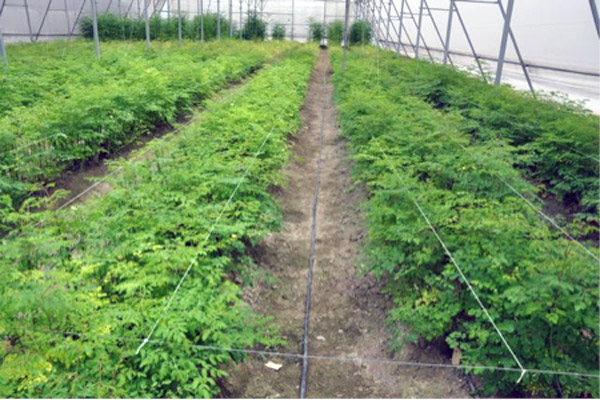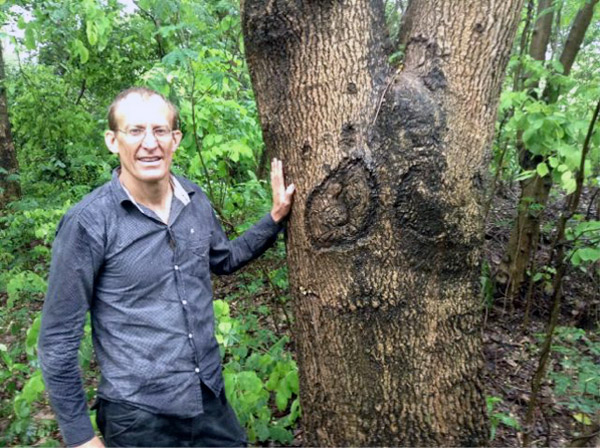- A growing population and the effects of climate change are threatening and destroying agricultural lands vital to feed the 7.3 billion people now inhabiting the planet.
- Dr. Mark Earl Olson of the Universidad Nacional Autónoma de México proposes in-depth research into the cultivation of the humble Moringa tree as a solution to the growing nutritional crisis.
- Known for its spicy taste, high protein, iron, and vitamins A and C content, the Moringa’s leaves offer a potential solution to global famine and malnutrition.
As the human population continues to grow, the effects of climate change and rapid development increasingly threaten and destroy agricultural lands vital to feed the 7.3 billion people now inhabiting the planet. For far too many, it’s become difficult, if not impossible, to obtain optimal nutrition from dwindling natural resources.
Dr. Mark Earl Olson of the Universidad Nacional Autónoma de México proposes a novel solution to meet the growing nutritional crisis: in-depth research into the cultivation of the humble Moringa tree (Moringa oleifera). Known for its spicy taste, high protein, iron, and vitamins A and C content, the Moringa’s leaves offer a potential solution to global famine and malnutrition. Additionally, portions of the Moringa tree show promise as a cancer-preventive and as a possible treatment for diabetes.
Farmland is typically scarce in the harsh, dry climates where the Moringa tree flourished originally in Africa and Asia, and where introduced in Latin America. The people in these regions would be the greatest beneficiaries of its rich nutritional and medicinal properties.

The Moringa also provides access to potable water through its unique water purification abilities — meeting a significant daily need for people who inhabit arid areas. After the tree’s seeds are pressed to produce edible oil, the seed shells provide a protein-rich substance which functions as a natural water purifier, attracting dirt particles.
Utilizing a versatile plant
Dr. Olson recently launched the International Moringa Germplasm Collection (IMGC) as an effort to broaden the study of the thirteen different known Moringa species, and to make them more available to global agriculture and the global diet.
Dr. Olson and his team hope to identify specific genetic traits within each species to overcome the bias of previous, smaller-scale studies that depended upon restricted sample sizes. “The highest yields of digestible protein were not used for the simple reason that the scientific studies necessary to identify and make them available have never been carried out,” explains Dr. Olson.

In defense of the prior studies, Dr. Olson notes that the trees are found in very remote areas of mainland Africa, Asia, and the island of Madagascar, making them difficult to locate and study. Further, past studies of Moringa trees were often done of single species, in isolation and scientifically independent of each other. Dr. Olson is combining those studies to analyze their cumulative results.
Despite the limited scope of previous studies, Olson believes there is enough evidence — both scientific and anecdotal — to warrant his wider research. The evidence so far suggests that the simple dietary addition of eating a serving of Moringa leaves daily, as a vegetable, would be sufficient to experience its many beneficial nutritional properties.
Conversely, Olson warns against Moringa fad dietary supplements. “Moringa capsules are a scam largely because they have never been the subject of clinical trials,” he says. Clinical trials would determine how honest labeling is regarding the concentrations of vitamins and minerals. Currently, capsules typically contain less than half a leaf, and Dr. Olson questions how effective such a small portion could be.
Discovering Moringa genetics, movements
Dr. Olson hopes to find out which Moringa tree genes are responsible for providing vitamins and minerals, cancer prevention and diabetes control. He also hopes to determine how the tree has historically dispersed throughout the world.

Understanding Moringa geography and relocation patterns will help researchers to know where genetic variation is more uniform, versus where genetics are less consistent and require further analysis. Olson believes that genetic testing will ultimately identify the most suitable species and varieties for widespread cultivation and consumption.
Moringa oleifera, the main focus of the IMGC’s germplasm testing, is the most common variety. It’s easy to obtain, grows quickly, and tastes good. “Of the species that have been studied, it is the most beneficial,” Olson asserts. Despite the promise of this particular species, Olson plans to “study all of the species to understand benefits — maybe equal or even better than M. oleifera.”
Historical records provide a starting point
Different varieties of the tree are endemic to parts of Africa, the Arabian Peninsula and India. Two species have only been seen and recorded twice; a third was recorded twenty times; and another species has not been seen since the early 1900s. Olson credits these sparse sightings with “lack of exploration, rather than a lack of Moringa.”

Historical records do show how the Moringa tree spread globally. Dr. Olson cites “ship records that show that the Moringa came to Mexico via the Manila-Acapulco route hundreds of years ago.” Since then, it has thrived throughout Mexico and the New World tropics.
Even though humans are responsible for introduction in some areas, the Moringa is not considered an invasive because it does not assume the niches and take over the habitats of native species. Instead, Moringa grows in disturbed locations, so-called waste places, such as “vacant lots or roadsides” notes Olson. Although not considered a threat to native trees, researchers continue to monitor Moringa genetics to verify that none have escaped the confines of the designated germination settings.

Local involvement in research
Dr. Olson hopes to introduce the Moringa into global agriculture sustainably, and with the involvement and for the benefit of local farmers. Because the Moringa tree is so prolific, overharvesting of leaves should not be a fear.
It is Olson’s mission to engage local communities in the research process, especially students and laboratories from where the trees originate. The research team furthers this goal by working with the NGO Trees for Life, who “are in charge of ensuring that any exceptional variants we find are distributed to local communities who need them,” Olson assures.
Moringa research and cultivation stands at an emerging intersection of agriculture and science where local involvement is increasingly valuable, essential and mutually beneficial.
